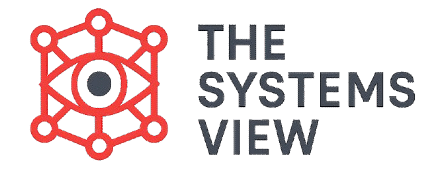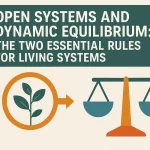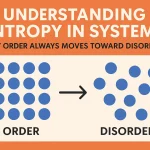When you want to understand how anything alive—from a tiny amoeba to a giant company—survives, you have to start with the concept of the Open System. This idea is one of the most fundamental contributions of General Systems Theory (GST), pioneered by Ludwig von Bertalanffy. An Open System is the opposite of a rigid, closed machine. It explains the secret to how all living things manage to keep their internal order and complexity even in a world that constantly pushes toward chaos and breakdown.
The key to this survival is flow and constant exchange with the environment. Because an Open System must always interact with its surroundings, it can rebuild its structure faster than it decays. Understanding this continuous exchange is the first essential step in understanding all dynamic, complex systems.
The Definition of an Open System
The central definition of an Open System is simple: it is any system that must continually exchange both matter (resources) and energy (information, heat) across its boundary to survive.
Exchange is Mandatory
For a system to be considered truly “open,” the exchange with its environment is not optional; it is mandatory for existence.
- Closed Systems: These only exchange energy (usually heat). For example, a thermos bottle with a closed lid exchanges heat with the room, but no materials enter or leave. They are predictable but cannot sustain life.
- Open Systems: These exchange both matter and energy. A human body must take in oxygen and food (matter) and sunlight (energy), and must expel carbon dioxide and heat. If this exchange stops, the system quickly dies.
The System Boundary
Every system has a boundary that separates it from the environment. In an Open System, this boundary is permeable, allowing materials and energy to flow easily across it. This allows the system to receive the inputs it needs and get rid of the outputs (waste) it produces.
Fighting Entropy Through Flow
The concept of the Open System directly confronts the universal law of Entropy.
What is Entropy?
Entropy is the tendency for all systems in the universe to move toward maximum disorder, randomness, and decay. If you leave a machine alone, it will eventually break down. This law suggests that complex, organized things should naturally fall apart.
Importing Order
An Open System fights this decay by constantly importing highly organized, low-entropy resources (like food or clean fuel) and exporting highly disorganized, high-entropy products (like waste and heat).
- By continuously taking in new, useful energy and matter, the system can rebuild its internal structure faster than it decays.
- This constant flow of materials allows the system to maintain a high degree of complexity and organization, proving that life is essentially a battle against entropy.
The Open System is the fundamental concept in Systems Thinking that defines all living and organized entities. It proves that life is a process of continuously exchanging matter and energy with the environment to fight against the natural law of entropy.
The System’s Purpose: Maintaining Form
The primary purpose of the constant exchange in an Open System is to maintain its form or identity over time.
Maintaining Identity
Even though the materials within an Open System are always changing, the system’s structure and organization remain stable.
- Think of a whirlpool: the water molecules are constantly changing, but the shape (the whirlpool’s form) remains stable.
- In the human body, nearly all the atoms are replaced over several years, yet your identity, memories, and physical shape remain relatively the same.
This ability to maintain form through constant internal change is called Dynamic Equilibrium, which is only possible because the system is open and flowing. The Open System provides the lifeblood—the resources—necessary for that dynamic balance.
Conclusion
The concept of the Open System is the foundation of General Systems Theory. It established that all living things are defined by their constant, mandatory exchange of matter and energy with their environment. By flowing resources across its permeable boundary, the Open System manages to fight universal entropy, maintain its complex internal organization, and continually sustain its unique form, providing the most basic rule for how living things survive.



